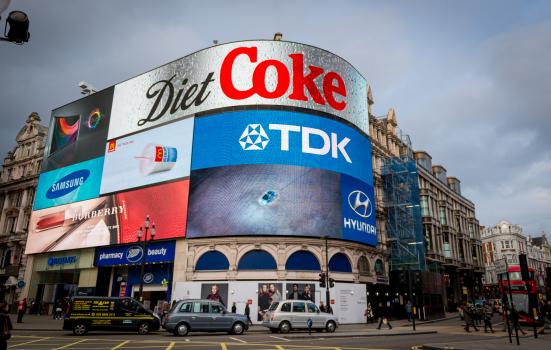Thinking of rebranding? Rob Macpherson unpacks what you need to think about before embarking on a radical rethink of your image.

C3nsored via iStock
“If you were put on trial for living a truthful life, would there be enough evidence to convict you?” This typically earnest Thought for the Day provocation popped up on Radio 4 recently. Get your head around it, replace ‘living a truthful life’ with ‘your brand’ and you might provoke a useful conversation with trustees and colleagues.
Your brand after all is much more than logos, pantones, fonts, tone-of-voice and other ‘codified’ assets that make up the important bit called ‘branding’. Get this distinctiveness right – i.e. consistent and creative - and you have a better chance of being noticed and remembered.
But before you rush to write a brief, consider a few preliminary steps
There is a deeper complex meaning to your brand which is often hard to articulate. Does the ambition or intent of your vision match the reality in the minds of your target buyers and investors? And what do you really want to be famous for? Would everyone from trustees to casuals give the same response?
Your brand represents the ideas, memories and associations people have about you, based on your actions and identifiable by your styling. Marty Neumeier who wrote The Brand Gap expands on this: “A customer’s gut feeling about a company – it ends up in their heads, in their hearts. They take whatever raw materials you throw at them, and they make something out of it… they’re making it, they’re creating it.”
The trick is to ensure you deliver ‘raw materials’ that inspire the attitudes and behaviours you want - both the emotional associations and the active response. Decide and agree how you want your audiences to think, act and feel whenever they encounter your communications.
Think. Act. Feel.
Channel 4 makes us think differently about them than about ITV or the BBC even though what they do is fundamentally the same. And their portfolio accommodates a range of tastes but always with an alternative signature flourish.
Apple is often used as an example because it is so skilled at constantly reinforcing what it wants us all to think: ‘design-led, human, creative, desirable’. And Burberry ads are driven by these three: ‘cool, English, practical’. Interestingly, they’ve recently been reaching out through contemporary dance, spoken word and physical theatre.
Think. Act. Feel. Try asking colleagues and friends what a selection of arts brands represent for them. Does everyone think the same about Edinburgh Festival? Do The Proms make us act in the way the BBC/Albert Hall want? How different does the LSO feel from the LPO, or Aurora Orchestra or Manchester Collective?
How to understand and track the way your brand plays out in the real world
Constructing an emotional link between your offer and audiences’ motivations, needs and desires - and connecting with trends that matter in the wider world - is very important to becoming (or remaining) credible, relevant and ‘top of mind’.
The skill is to constantly observe what people say and what they actually do (these are often different) and understand where and how your brand can manoeuvre itself to align with those realities.
Start with your hardcore audiences, the obsessive fans. Your relationship with them can be very direct and tangible. They’ll often readily tell you in detail how much and why they love you. Dig into this to comprehend the strongest motivations.
Your ‘founders’ story’ is also crucial here - the fundamental reason you exist - as it can only ever be yours and is inherently unique.
“I can see they have their branding right but I don’t know what they stand for”
Asked in the right way, stakeholders from a range of sectors will also tell you like it is – the quote above is a recent example. Perceptions can be unkind, especially if they don’t reflect your reality, so you might need to take this on the chin.
But at least you know, from the voices you value, where your comms plans is being misinterpreted or not cutting through, and you can work on telling that brand story better as part of a strategic advocacy plan, equipping trustees to support you.
However successful a brand you are, your current audience is only a small proportion of the wider potential market. Niche brands often accept this, perhaps as something very specialist which thrives on a club atmosphere in a comfortable bubble.
Growth is a preferable and safer route for most, insulating your business longer term by being more appealing to a greater and more diverse number. This means engaging more expansively, often at a superficial level, with light buyers who are content with a more distant relationship and aren’t easily accessible through a database.
For long-term brand health, lots of light buyers always trump a small number of intense and often demanding obsessives. Loyalty isn’t always the answer.
Familiarity and reassurance
If Scott Galloway of the Pivot podcast is right, contrary to what most marketers think, average consumers don’t necessarily desire ever-expanding choice; rather, they want confidence in the choices they make.
This elusive group of buyers responds better to marketing messages when they feel confident about the brand. They need familiarity and reassurance, positive associations and social proof (recommendations from trusted others), memorability and quick recognition.
All this builds ‘salience’, the notion that it’s your brand that comes to mind when the potential customer is ready to purchase. It’s pretty affordable to recruit an online panel suitably representative within your key territory and check opinions, attitudes and behaviours.
You can assess their media diet, and grade levels of awareness, consideration, interest and purchase preference for your brand and those of your competitors. And you can track this over time to see whether you’re shifting the dial to quite a detailed level by setting specific growth objectives.
Taking this strategic long-term approach to truly living your brand should provide evidence to help you answer the fundamental questions: What makes you different and what difference are you making?
Rob Macpherson is Managing Director at Impakt.
![]() www.creatingimpakt.com/
www.creatingimpakt.com/
![]() @creatingimpakt
@creatingimpakt




